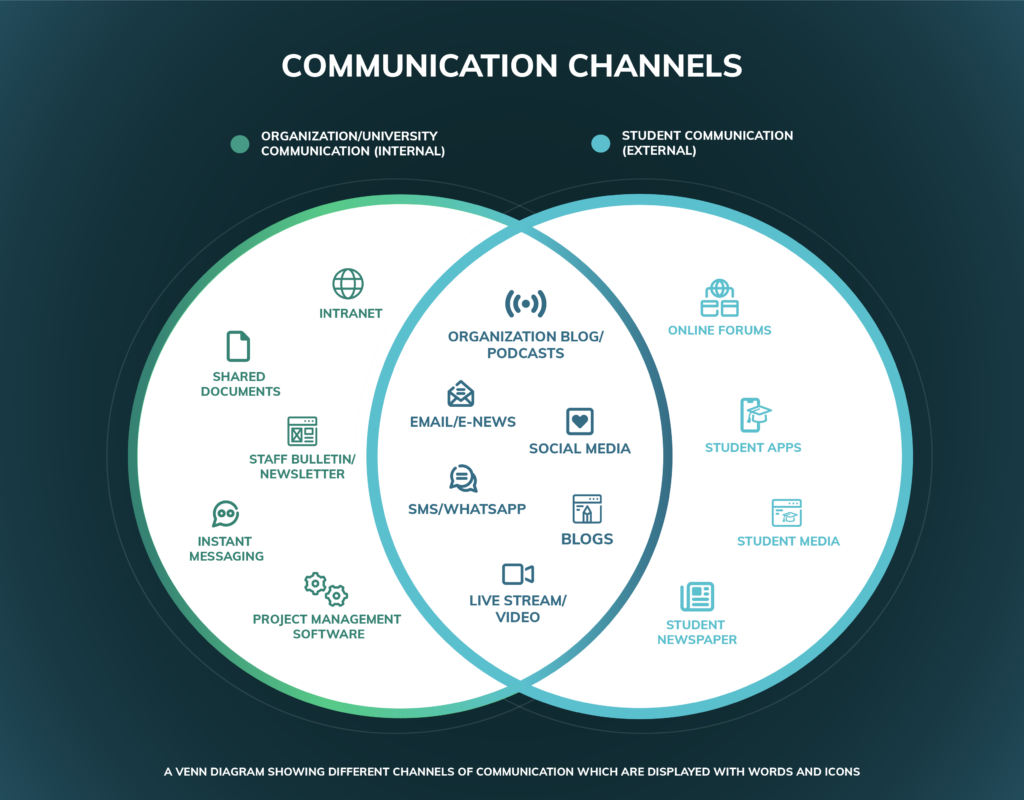Getting the word out effectively about your incremental credentials will require both marketing and communications. A strong digital presence matters in higher education—a fact underscored by a survey shared by Noetic Consultants, a marketing and leadership consulting firm.
The survey from Carnegie Dartlet/CollegeXpress, “Student Insights Report 2022” showed that among higher education prospects (future students), 95% said website design influences their college choice. Also, 82% use search engines to learn about a degree or program without having a school already in mind, 73% use social media to research college options, and 49% enjoy web content that is personalized to their interests and behaviors.
Here are key “channels” (delivery methods) commonly used to communicate about incremental credentials:
Some providers use a number of these channels, others only one or two. The most popular avenues for getting the word out are websites and college catalogs.
Providers may have multiple websites to use, including an all-campus website and/or the program website. They also use their college catalogs, and in some cases separate catalogs exist for credit courses and programs and those that are non-credit. Providers often include wage information plus return on investment (ROI) data for various credentials. They describe pathways and courses, including information about prerequisites and costs. Websites often feature stories of successful students in credential programs, and they may include messages from employers indicating they value certain credentials.
Employers can also help get the word out, especially large employers. Their newsletters, intranet emails, and employee websites might describe credential programs, provide information about the employer’s tuition assistance programs, and share news of partnerships with colleges, and the availability of apprenticeships and other learn-and-work options that include short-term credentials. Company leaders can build credibility for incremental credentials via audio or video messages on program and college websites.
Academic and career advising offices and Prior Learning Assessment (PLA) units provide information directly to learners and assess skills and learning acquired outside the classroom.
Some providers submit their credentials to their system-level database/website if they are in a system that consolidates credentials. They also may submit their credentials to national platforms and/or intermediary websites.
Providers often communicate about new credentials and credential pathways through printed material—posters and fliers that are distributed through direct mail or posted on campus and at employer and community sites.
Social media platforms—including Facebook, LinkedIn, Twitter, and Instagram—are some social examples to get the word out.
Verifying and recording credentials sends an important message about their value to learners and employers. Providers can record credentials in the college transcript, and then work with students to include them in resumés and student-owned e-portfolios.

Add an initiative to your communications and marketing master template that clearly defines the channel(s) you will use, identifies the credential(s) you are marketing, and for what period of time (e.g., over a year’s period).

Credential As You Go has acquired three phases of funding to date. Lumina Foundation funded Phase I, resulting in the Incremental Credential Framework for testing. The Institute of Education Sciences, U.S. Department of Education funds Phase II (Grant R305T210063), which focuses on rapid prototyping of and research on incremental credentials with a national campaign. An anonymous private donor fund at the Program on Skills, Credentials & Workforce Policy at George Washington University funds the development of the prototype Learn and Work Ecosystem Library. Walmart funds Phase III, which focuses on systems change for expansion and sustainability of incremental credentials. The opinions expressed are those of the authors and do not represent views of Lumina Foundation, Institute of Education Sciences, the U.S. Department of Education, Walmart, or George Washington University.